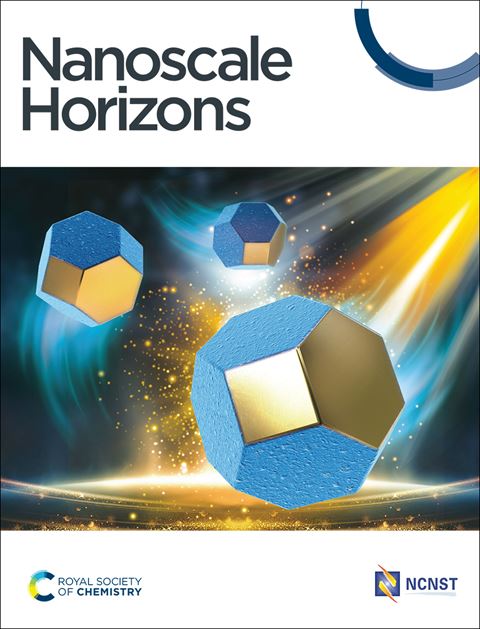Light-triggered quenching of the 19F-MRI signal from micelle-encapsulated PERFECTA.
IF 6.6
2区 材料科学
Q1 CHEMISTRY, PHYSICAL
引用次数: 0
Abstract
We report the development of a fluorinated micellar nanosystem whose 19F-MRI signal can be selectively dimmed by application of an external stimulus. A photo-activatable quencher unit (ferrocene) was co-encapsulated with the superfluorinated PERFECTA probe in colloidal micelles. While pristine micelles were MRI responsive ("On" state), their irradiation by light triggered the "Off" MRI-state of PERFECTA.
胶束封装PERFECTA的19F-MRI信号的光触发猝灭。
我们报道了一种氟化胶束纳米系统的发展,其19F-MRI信号可以通过外部刺激选择性地变暗。光活化猝灭单元(二茂铁)在胶体胶束中与超氟化PERFECTA探针共包被。虽然原始胶束是MRI响应(“开”状态),但它们的光照射触发了PERFECTA的“关”MRI状态。
本文章由计算机程序翻译,如有差异,请以英文原文为准。
求助全文
约1分钟内获得全文
求助全文
来源期刊

Nanoscale Horizons
Materials Science-General Materials Science
CiteScore
16.30
自引率
1.00%
发文量
141
期刊介绍:
Nanoscale Horizons stands out as a premier journal for publishing exceptionally high-quality and innovative nanoscience and nanotechnology. The emphasis lies on original research that introduces a new concept or a novel perspective (a conceptual advance), prioritizing this over reporting technological improvements. Nevertheless, outstanding articles showcasing truly groundbreaking developments, including record-breaking performance, may also find a place in the journal. Published work must be of substantial general interest to our broad and diverse readership across the nanoscience and nanotechnology community.
 求助内容:
求助内容: 应助结果提醒方式:
应助结果提醒方式:


